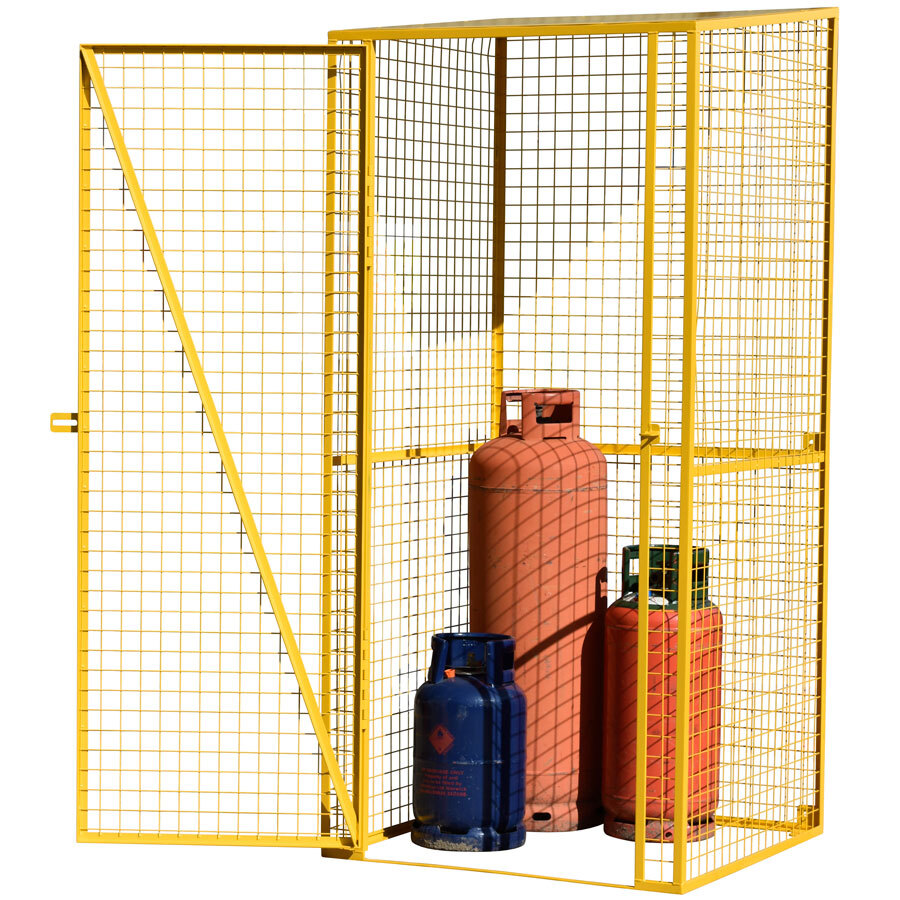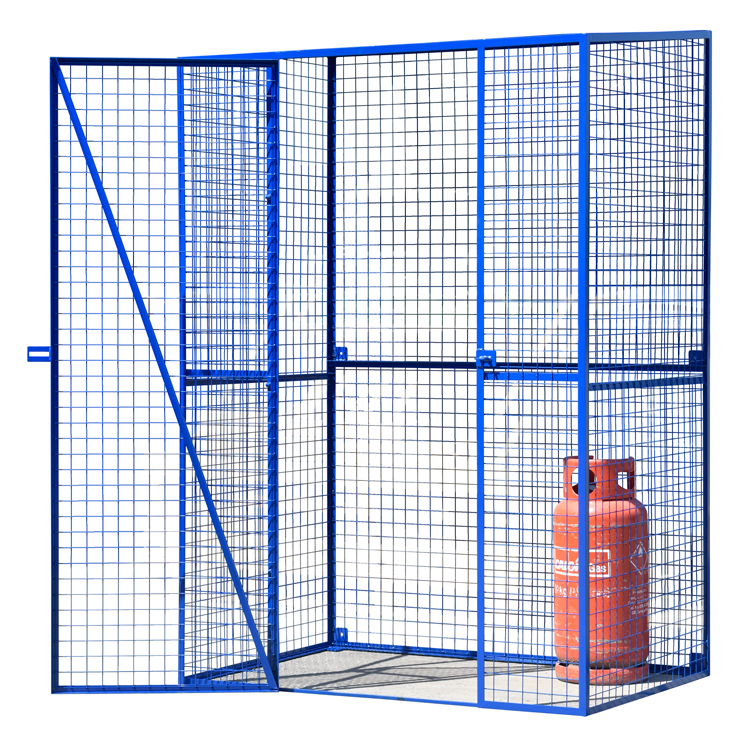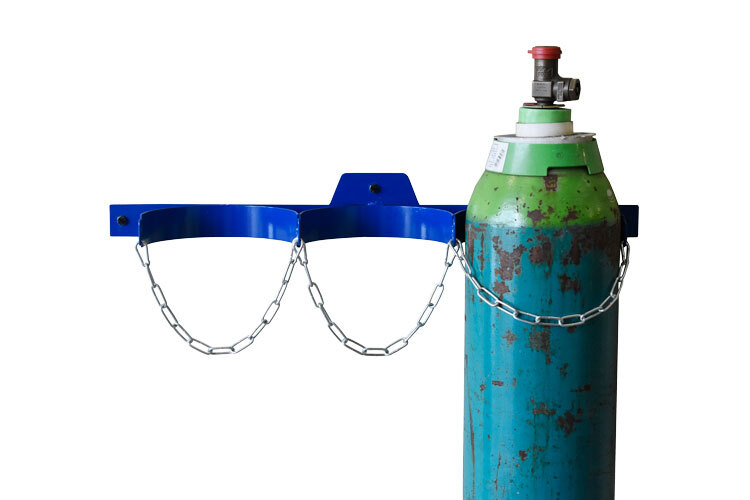10th Feb 2025
Discussing Gas Storage is Not a Load of Hot Air
Regardless of the industry in which they’re being used, it is essential that compressed gas cylinders are stored safely, securely and in line with both the Health and Safety Executive (HSE) regulations and British Compressed Gas Association (BCGA) code of practice (CP44).
Compliance to these robust safety requirements for compressed gas cylinder storage will minimise the risk of potentially dangerous incidents such as fire, explosions and or sudden, unwanted release of stored gases, and no one like to be surprised by this.
At Handle-iT, we can help you to ensure you are using the most appropriate storage solution of your compressed gas bottles and cylinders. Our comprehensive range of gas cylinder cages, wall and floor mounted storage racks and floor stands will ensure your business compliance is in line with all current HSE / BCGA requirements.
Relevant HSE regulations apply in all circumstances, whether gas cylinders are full or empty; unless a cylinder is new, de-valved or has not yet been filled with gas, all vessels should be treated as if full when it comes to safety-compliant storage as a matter of good practices.
There should be little deviation in requirements when handling empty gas cylinders compared to full or part full cylinders, and the responsible person must ensure appropriate storage in both cases.
HSE guidelines / BCGA codes of practice for gas cylinder storage outline several important factors to be aware of when planning safe storage, and rigorous risk assessments should be carried out to address the following factors:
- Selection of cylinder Storage Location: To determine a suitable storage location, you should evaluate the potential hazards of the material and the quantity of cylinders being stored. Distance from other stored materials, process plant and traffic routes must be taken into consideration, and the storage location must be secure, ideally on a concrete or load-bearing surface above ground level, and with clear emergency exits available if stored indoors.
- Adequate Ventilation: ‘Best Practice’ dictates that compressed gas cylinder storage areas should be external to buildings, in the open air. This allows for the safe dispersal of any vapours. In the event that an outdoor storage location is not possible, indoor storage areas must be properly ventilated, this would be determined by a suitable and sufficient risk assessment.
- Storage Layout: Compressed gases should be stored upright, with visible valves. LPG cylinders stored according to HSE guidelines should not exceed 30,000kg when stored outside, and no more than 5,000kg when stored inside.
- Separation Distances: Storing multiple hazardous materials requires careful planning to ensure that toxic, self-reactive or flammable materials are stored at an appropriate separation distance of at least 3 metres. If this is not possible, a non-combustible barrier at least 1.5 metres high, such as a firewall, can also be utilised.
- Appropriate signage: Compressed gas cylinders should have notices displayed with appropriate safety signage, detailing key safety information such as the relevant COSHH symbol and whether the cylinder still contains gas. This assists in the separation of full and empty cylinders, as well as segregation based on gas type, for example, flammable gases or oxidants.
- Storage of other products: Gas cylinder storage areas should be used exclusively for their designated purpose. Other products such as flammable materials or corrosive liquids, should never stored in the same area.
Do Gas Cylinders Need to Be Stored in a Cage?
Although the HSE / BCGA do not specifically stipulate that compressed gas cylinders must be stored in secure cages, it is highly recommended (BCGA CP44). This is because a gas cage ultimately provides a safe, secure solution that allows cylinders to be isolated from other potentially hazardous materials and prevent malicious interference. If you have never seen a gas bottle lose its valve this video will open your eyes to the severity of the problem. Just don’t invite these guys around to do your cleaning.
Where it is not possible to storage cylinders within a secure cage, it is highly recommended that gas cylinders are secured with a chain or restraint. This will prevent the cylinders from falling over, which could result is damage to the cylinder and a sudden release of stored energy.
Compressed Gas Handling Safety DO’S AND DON’TS
Do’s
• Only trained, competent persons should handle compressed gas cylinders.
• Always utilise the correct, appropriate Personal Protective Equipment (PPE) such as gloves, safety glasses, and protective clothing while handling gas cylinders.
• Only transport cylinders using appropriate manual handling aids.
• Ensure ‘No Smoking’ signs are clearly displayed and observed
• Check for the cylinder’s pressure rating and ensure the pressure is not exceeded while using the gas.
• Use valves, regulators, and other equipment compatible with the type of gas being used.
• Maintain storage areas in a clean and dry environment.
Don’ts
• Do not use the cylinder for any purpose other than what it was intended.
• Do not expose the cylinder or valve to heat or ignition sources.
• Do not use damaged or corroded cylinders.
• Do not store the cylinder in confined or unventilated spaces.
• Do not handle compressed gas cylinders if not trained to do so.
• Do not tamper with cylinder valves or adapters.
Gas Cylinder Storage Recommendations
Here are some best practices for storing gas cylinders:
• Store gas cylinders in well-ventilated areas, away from heat sources or flammable.
• If dealing with flammable gases, ensure your storage area has spark-proof fittings.
• Store cylinders upright, preferably on a pallet and not directly on the floor, to avoid corrosion or rust.
• Keep incompatible gases separated, as they can spontaneously react if mixed.
• Always store empty and full cylinders separately.
Gas Cylinder Maintenance Tips
Always follow these maintenance tips to help keep gas cylinders safe and in good condition:
• Always ensure the Cylinder Maintenance and Inspection (CMI) tag is current and legible.
• If the cylinder or valve is damaged, rusted, or dented, discontinue use and promptly contact your gas supplier for replacement.
• Inspect the cylinder for leaks, cracks, or signs of wear before using it.
• Do not paint the cylinder or valve, as it camouflages the visual signs of its condition.
• Never modify or repair gas cylinders yourself.
This information is intended for use as a guide, but may not be suitable for all environments, workplaces, and working conditions. If you require guidance for your specific workplace, get in touch with our team on 01803 875 222, or email healthandsafety@handle-it.com.



